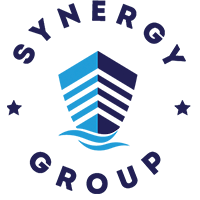Introduction
Two of the IMO’s new carbon emission targets in the shipping industry are a 40% reduction by 2030 and a 70% reduction by 2050, each compared to 2008. Emissions in international trade must also see a 50% reduction by 2050. The IMO has derived two indices – the EEXI and the CII – for shipowners to use as reference points as they attempt to reduce these levels and get on track to meet the various targets. We briefly discuss these new indices in this post.
The EEXI – Energy Efficiency eXisting ship Index
Following the 2020 Marine Environmental Protection Committee (MEPC) 75 meeting, 1 January 2023 is the effective date for this particular index. In essence, the EEXI is the successor to the Energy Efficiency Design Index (EEDI), which has been in effect since 2013, but it also applies to existing vessels that do not come within the EEDI. Specifically, it applies to those over 400 GRT covered by MARPOL Annex VI.
The EEDI and the EEXI use the same methodology to set CO2 emission standards. CO2 emissions are evaluated according to cargo tonnes and miles, factoring in the power of the engine and its transport capacity, and the vessel’s speed. Standardised in this way, the emissions are determined by the amount of fuel oil consumed, the installed power of the main engine and its auxiliary units and a conversion factor for fuel mass and CO2 mass.
The CII – Carbon Intensity Indicator
This is completely new, following MEPC 75, and applies to vessels over 5,000 GRT, whose carbon emissions must be quantified and reported. To implement continuous improvement and ensure compliance with regulations, the CII provides a measure for determining how much CO2 emission ship operators need to reduce every year. A Ship Energy Efficiency Management Plan(SEEMP) must include the CII, and is a mandatory, ship-specific document that sets out a process for improving energy efficiency in a cost-effective manner.
An annual efficiency ratio from within the Poseidon Principles – a framework that seeks to align ship finance with environmental impact – is part of the basis of the CII, and (depending on the outcome of MEPC 76) the CII might later be based on actual as opposed to design deadweight.
Decarbonisation is essential
These new IMO measures were introduced to get ships closer to achieving the targets set by the Paris Agreement, and Owners and Managers must determine the carbon intensity profiles of their vessels by the end of 2022 and also set an optimal SEEMP. When the CII comes into force on 1st January 2023, vessels must have on board all documentation proving compliance. Vessels will be graded, A to E, according to performance. Those rated E at annual review, or at D for three consecutive years, will be required to undergo significant modifications to their design or operations.
What must Owners and Managers do?
It is essential that all take the time required to evaluate and improve their vessels, as needed, ready for the upcoming EEXI and CII requirements. Obtaining the proper certificates and demonstrating compliance, by the end of 2022, is vital if vessels are to continue to trade internationally.
There are mandatory steps, and there is also help, along the way to compliance.
The EEXI assessment process allows a preliminary technical file review which (if all is well) can result in an EEXI statement of compliance. Also, when these new provisions are in force, any annual, intermediate, or renewal survey for the International Air Pollution Prevention Certificate will include verification of the ship’s EEXI.
Ship operators may need to improve continuously in order to comply with these new regulations, and there are many routes to bettering energy efficiency and reducing carbon emission, such as lessening engine load and decreasing speed, changing to lower carbon-emitting fuels and retrofitting vessels for new fuel or with energy-saving technologies.
Wrapping up
With regulations for emissions such as NOx and SOx already in place, the reduction of shipping’s environmental impact is a top priority for marine stakeholders and legislators, and shipowners need to start planning now for compliance with the ambitious CO2 targets. An EEXI sets out energy efficiency and CO2 emission measurements for each vessel over 400 GRT, and under a CII those over 5,000 GRT must quantify and report their carbon emissions. In order to comply with regulations and ensure continuous improvement, ship operators must reduce carbon emissions annually, based on the CII, with each vessel being assigned a performance rating, A to E.
There is no doubt that these new IMO indices will make a major contribution to cleaner seas.
 Admin
Admin



